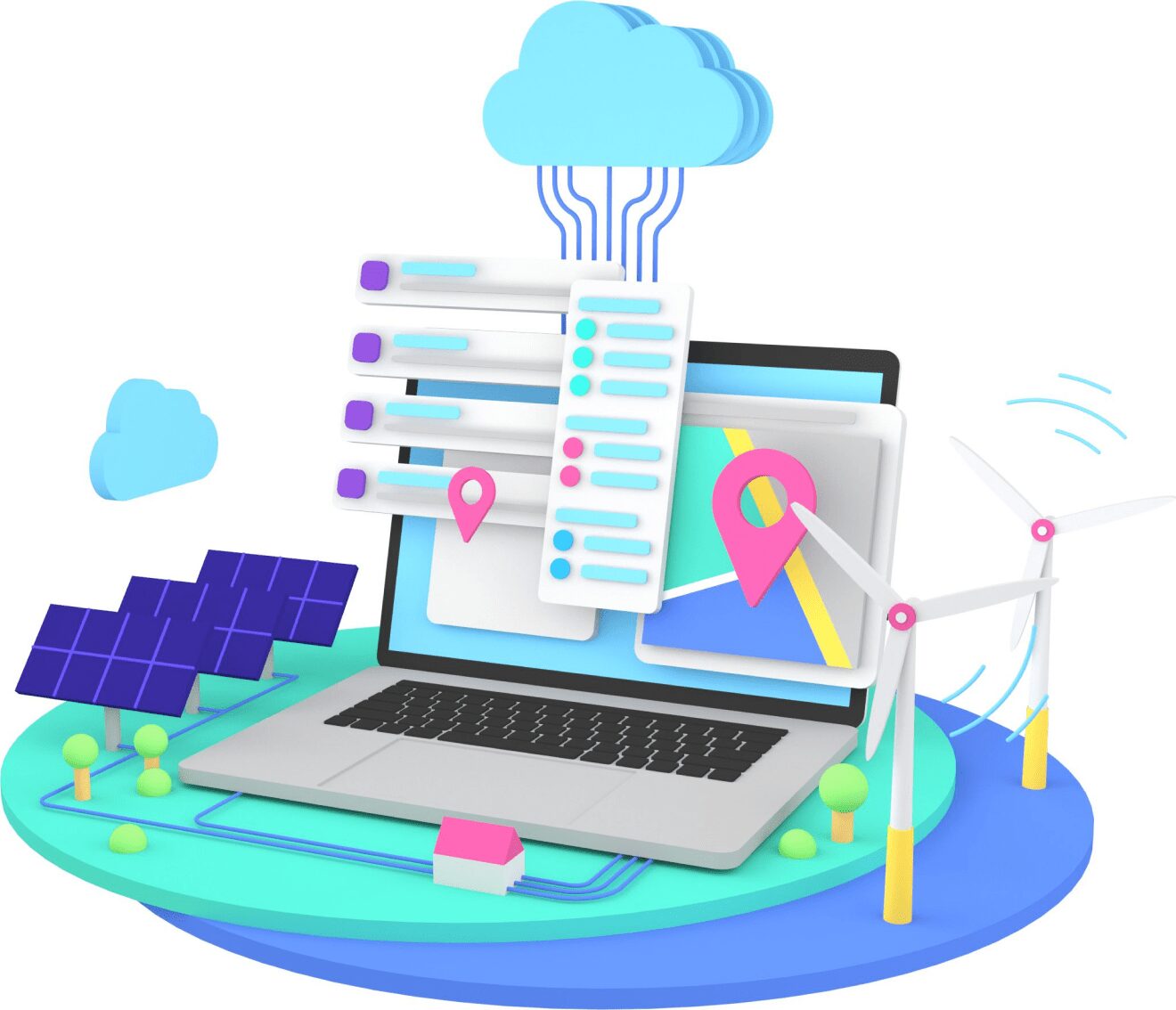The Intersolar event held in Long Beach, California, showcased the latest advancements and trends in the field of green energy.
Trevor Metcalf, our Marketing Manager from Resco North America, attended the event and shared his insights on the top five trends observed at Intersolar 2023.
This blog post will delve into these trends and provide a glimpse into the exciting future of renewable energy.

1. Scalable energy solutions
One of the prominent trends witnessed at Intersolar 2023 is the emergence of scalable energy effects.
Various companies showcased cutting-edge technology and software solutions that enable the initiation and expansion of green energy projects.
This trend signifies a shift towards empowering individuals and organizations to actively participate in the renewable energy transition.
Key points:
- Scalable energy solutions offer the flexibility to start small and expand gradually.
- Technology and software play a crucial role in facilitating the growth of green energy initiatives.
- The trend emphasizes democratization and accessibility of renewable energy resources.
Key data:
The International Renewable Energy Agency (IRENA) estimates that 90 percent of the world’s electricity can and should come from renewable energy by 2050.
One of the main drivers of increasing adoption of renewable energy has been the rapid decline in the cost of green technologies.
For example, the cost of electricity from solar power fell by 85 percent between 2010 and 2020. Costs of onshore and offshore wind energy fell by 56 percent and 48 percent respectively.
This has made renewable energy more competitive with traditional fossil fuel sources and has led to an increase in the adoption of green energy solutions.
2. Home energy tech revolution
Intersolar 2023 highlighted the rise of companies specializing in home energy tech. These innovative products enable individuals to adopt green energy practices within their residences.
Examples include solar panels, collapsible homes, and other eco-friendly solutions designed for domestic use.
This trend signifies the increasing emphasis on sustainability and self-sufficiency at the individual level.

Key points:
- Home energy tech products empower homeowners to generate and utilize renewable energy on-site.
- Solar panels and other green energy solutions are becoming more accessible and affordable for residential use.
- The trend reflects the growing awareness and demand for sustainable living practices.
Key data:
Especially in Europe, there is a growing trend of households integrating green energy into their homes. According to The Guardian, 2 million Europeans are now involved in 7,000 local energy communities across the continent, with numbers growing rapidly since EU directives promoting clean energy and energy communities were introduced in 2018 and 2019.
These local energy communities allow households to produce, consume and sell their own renewable energy. Examples include solar panels in the Netherlands and biomass burners in Spain. The EU sees the engagement and involvement of citizens producing and consuming energy locally as vital if the bloc is to meet its climate targets.
3. Safety and compliance solutions
Safety and compliance solutions emerged as a crucial trend at Intersolar 2023. Companies showcased products and software designed to ensure the safety of workers involved in green energy projects.
Additionally, these solutions facilitate proper data collection and compliance with industry standards, enhancing overall project efficiency and risk management.

Key points:
- Safety and compliance solutions prioritize worker well-being in the green energy sector.
- Enhanced data collection and compliance software streamline operations and improve project outcomes.
- The trend highlights the industry’s commitment to maintaining high safety standards and regulatory compliance.
Key data:
The hazards renewable energy workers encounter are often universal issues that people in similar fields experience. That said, clean power alternatives, like wind, have specific challenges that increase safety risks for operators and mechanics. This industry isn’t immune to threats.
Some of the most significant safety concerns for employees who work in renewable energy include machinery misuse, fall hazards, electrical currents and confined spaces. Therefore, processes like lock-out/tag-out and tools like Energy+ are important in improving industry’s safety standards.
4. Hydrogen energy advancements
Intersolar 2023 showcased significant advancements and interest in hydrogen energy.
Numerous companies presented novel technologies and products related to green energy and hydrogen.
Hydrogen is a promising alternative fuel source with vast potential to revolutionize various sectors, including transportation and industrial processes.
This trend signifies the increasing focus on hydrogen as a clean energy solution.
Key points:
- The emergence of new companies and technologies indicates the growing investment in hydrogen energy.
- Hydrogen offers a sustainable and versatile energy source with applications in multiple sectors.
- The trend highlights the potential of hydrogen to complement other renewable energy sources.
Key data:
The International Energy Agency (IEA) publishes an annual report called the “Global Hydrogen Review” which tracks hydrogen production and demand worldwide, as well as progress in critical areas such as infrastructure development, trade, policy, regulation, investments and innovation.
According to Fortune Business Insights, the global hydrogen generation market size was USD 145.67 billion in 2020 and is projected to grow to USD 220.37 billion by 2028, exhibiting a CAGR of 5.6% from 2021 to 2028.
This growth is driven by increasing interest in hydrogen as a clean energy solution and the development of new technologies and products related to green energy and hydrogen.
5. Software standardization for field operations
The final trend observed at Intersolar 2023 pertains to software standardization for field operations.
Many companies in the green energy industry face challenges in integrating pen and paper processes and different software solutions for various procedures in inspections, installations, and maintenance.
This trend calls for the development of a standardized software solution that simplifies and optimizes field activities, enhancing overall efficiency and collaboration.

Key points:
- Field operations in the green energy sector require a unified software solution for improved productivity.
- Standardization eliminates the need for multiple tools and enhances data sharing and communication.
- The trend emphasizes the importance of streamlining processes and ensuring seamless collaboration among stakeholders.
Key data:
The green energy sector can be considered an early adopter of digital technologies, however it must now be enabled to be a continued and efficient adopter.
By 2030, digital technologies have the potential to help resource-intensive industries in particular reduce their global Co2 emissions by 20%. In other words, these technologies can save 9.7x more emissions than they produce and digital tools will be a significant driver of the increased efficiency.
Conclusion
Intersolar 2023 provided a platform to explore the most exciting trends in the field of green energy.
The trends discussed in this blog post, including scalable energy solutions, home energy tech, safety and compliance, hydrogen energy advancements, and software standardization, highlight the industry’s continuous evolution and commitment to a sustainable future.
And tools like Energy+ can definitely help to shape the future of industry.
Discover Resco Energy+
